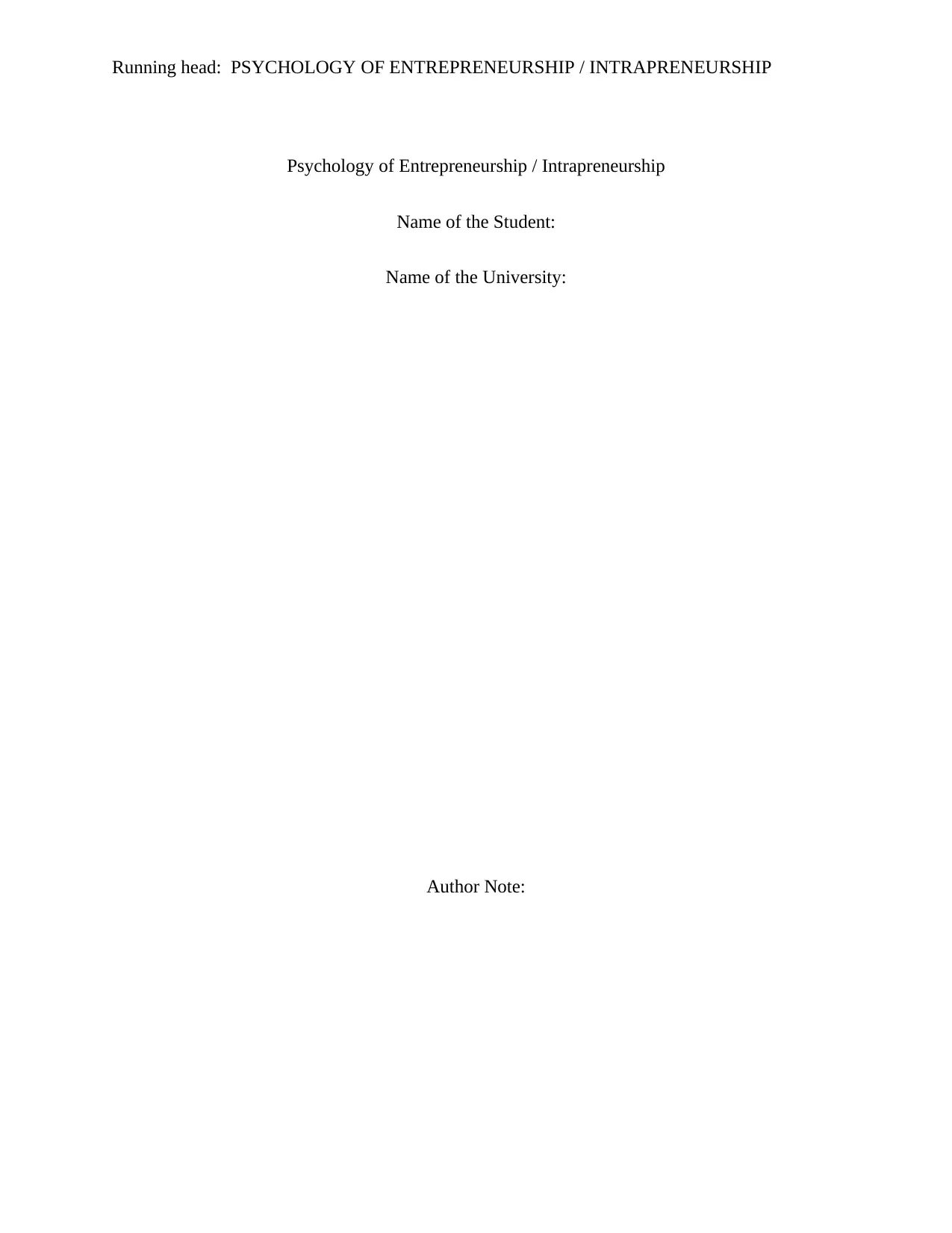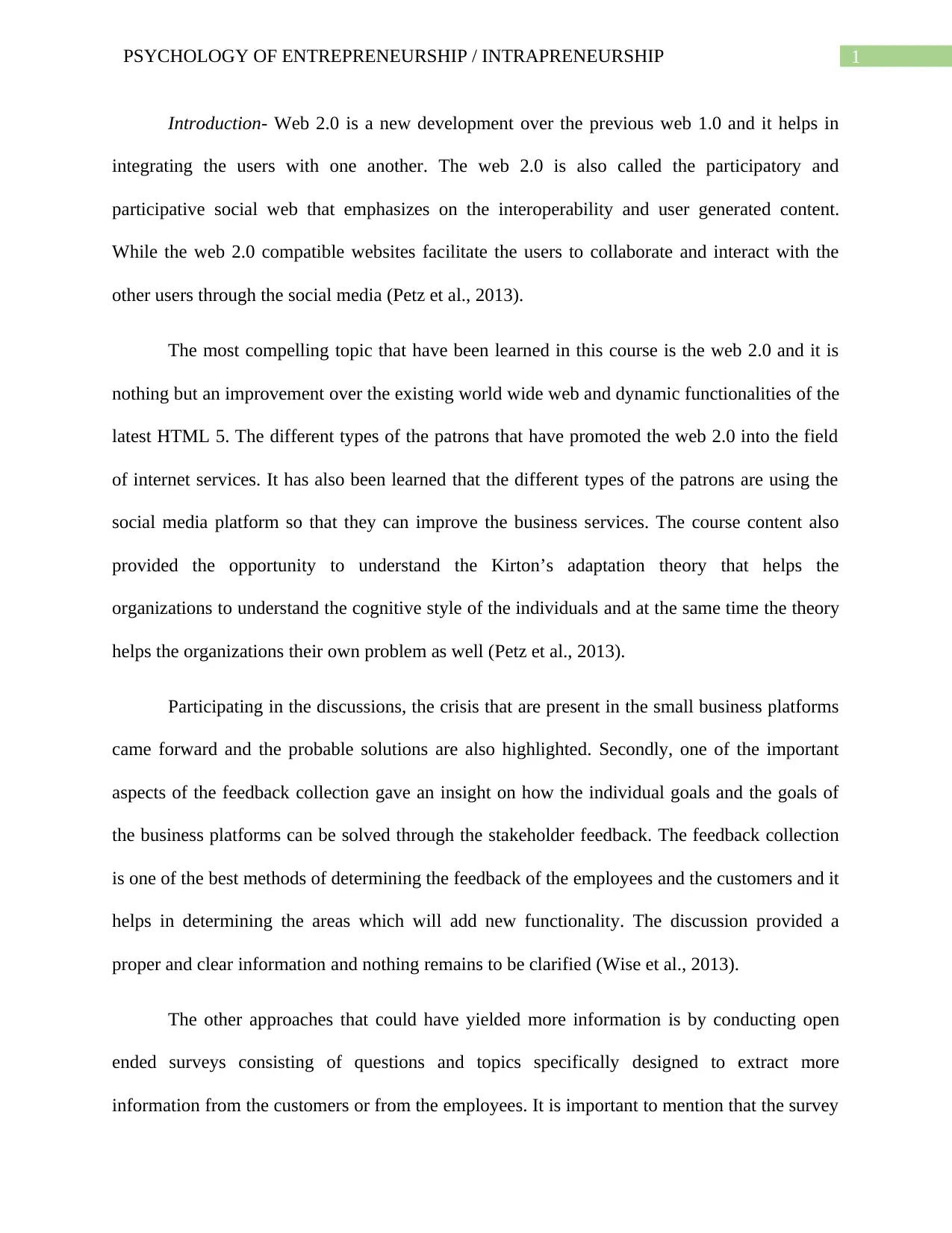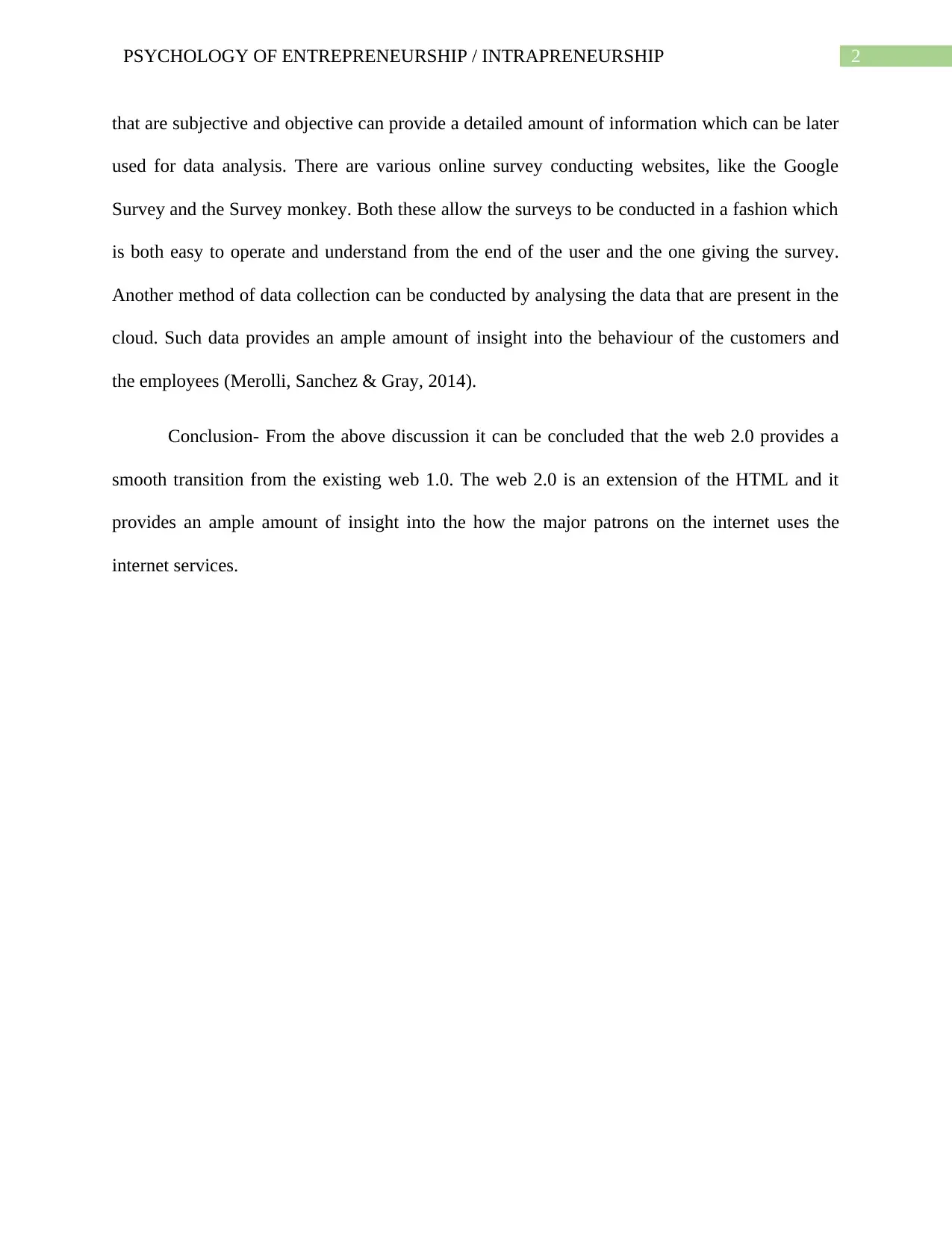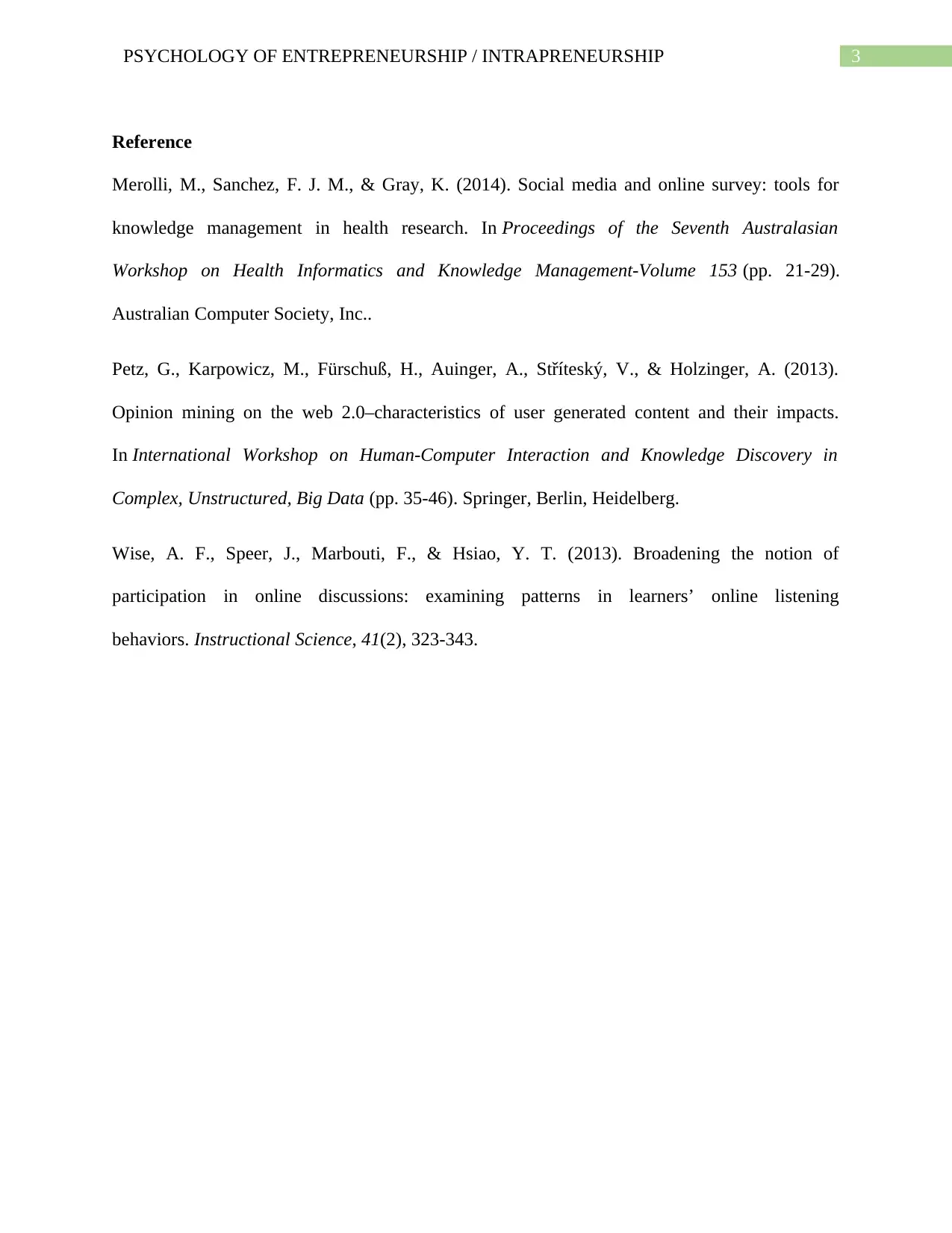Psychology of Entrepreneurship / Intrapreneurship Report - Web 2.0
VerifiedAdded on 2023/04/07
|4
|655
|387
Report
AI Summary
This report delves into the psychology of entrepreneurship and intrapreneurship, examining the impact of Web 2.0 and its evolution from Web 1.0. It highlights the importance of social media in business and explores Kirton's Adaptation-Innovation Theory, which aids in understanding individual cognitive styles and organizational problem-solving. The report discusses stakeholder feedback as a crucial method for aligning individual and business goals, emphasizing the value of online surveys and cloud-based data analysis for gathering insights into customer and employee behavior. The conclusion summarizes the smooth transition provided by Web 2.0 and its significance in understanding how major internet users utilize online services. The report also references relevant academic sources.
1 out of 4











![[object Object]](/_next/static/media/star-bottom.7253800d.svg)